Hilma af Klint was a Swedish painter and spiritualist whose abstract works predate the canonical “first abstractions” of Kandinsky, Mondrian, and Malevich by years. Trained as a conventional painter, she pursued parallel studies in Theosophy, Rosicrucianism, and spiritualist practices. In 1896 she formed The Five, a small group of women who conducted séances and automatic drawings, treating art as a channel for higher intelligences.
Between 1906 and 1915, Hilma af Klint created her Paintings for the Temple, a vast cycle of more than 190 works, many on monumental scale. These paintings unfold as geometric, symbolic diagrams of spiritual evolution: spirals, color-coded forms, botanical and cosmological symbols that map invisible forces. She instructed that they not be shown for at least twenty years after her death, convinced that the world was not yet ready to understand them.
Hilma af Klint’s work used abstraction not as aesthetic experiment but as metaphysical practice, translating visions into precise geometries. Rediscovered only in the late 20th century, her oeuvre reframes the history of modernism, showing that abstraction was seeded not only in male avant-garde circles but also in esoteric, feminist, and spiritualist practices. Today, her paintings are recognized as among the most visionary of the 20th century: portals into unseen worlds, rendered with mathematical care and mystical conviction.
See also: Emma Kunz
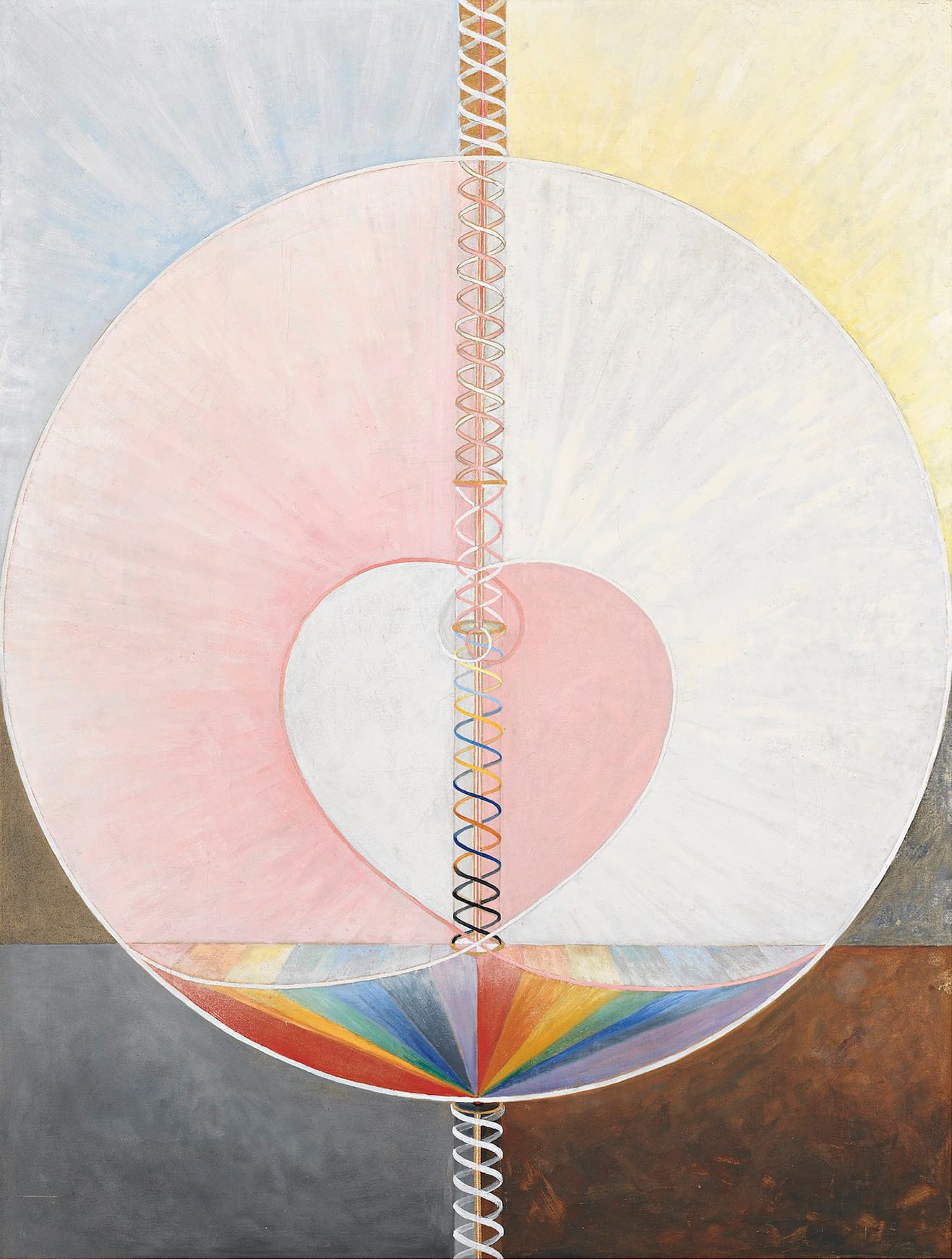
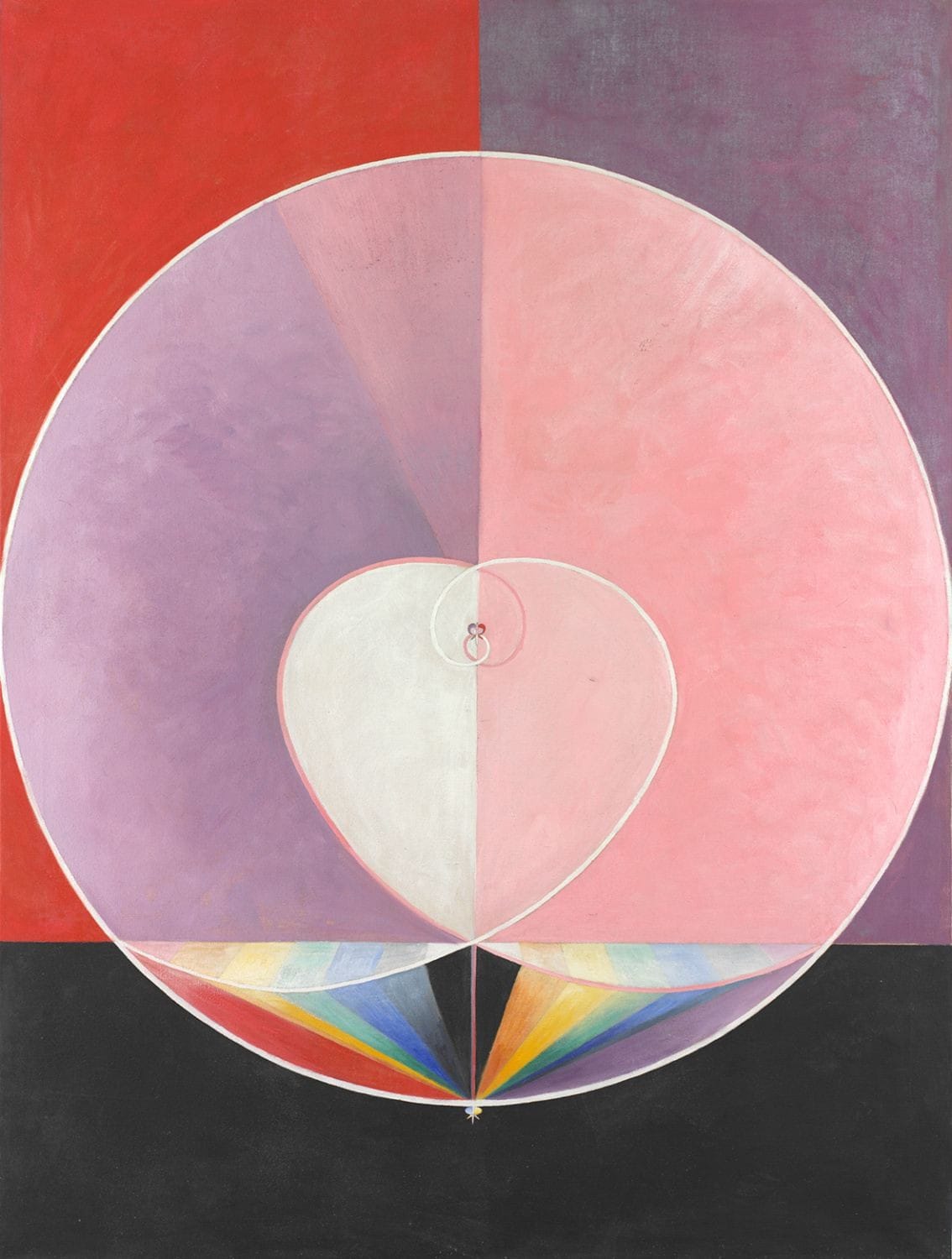
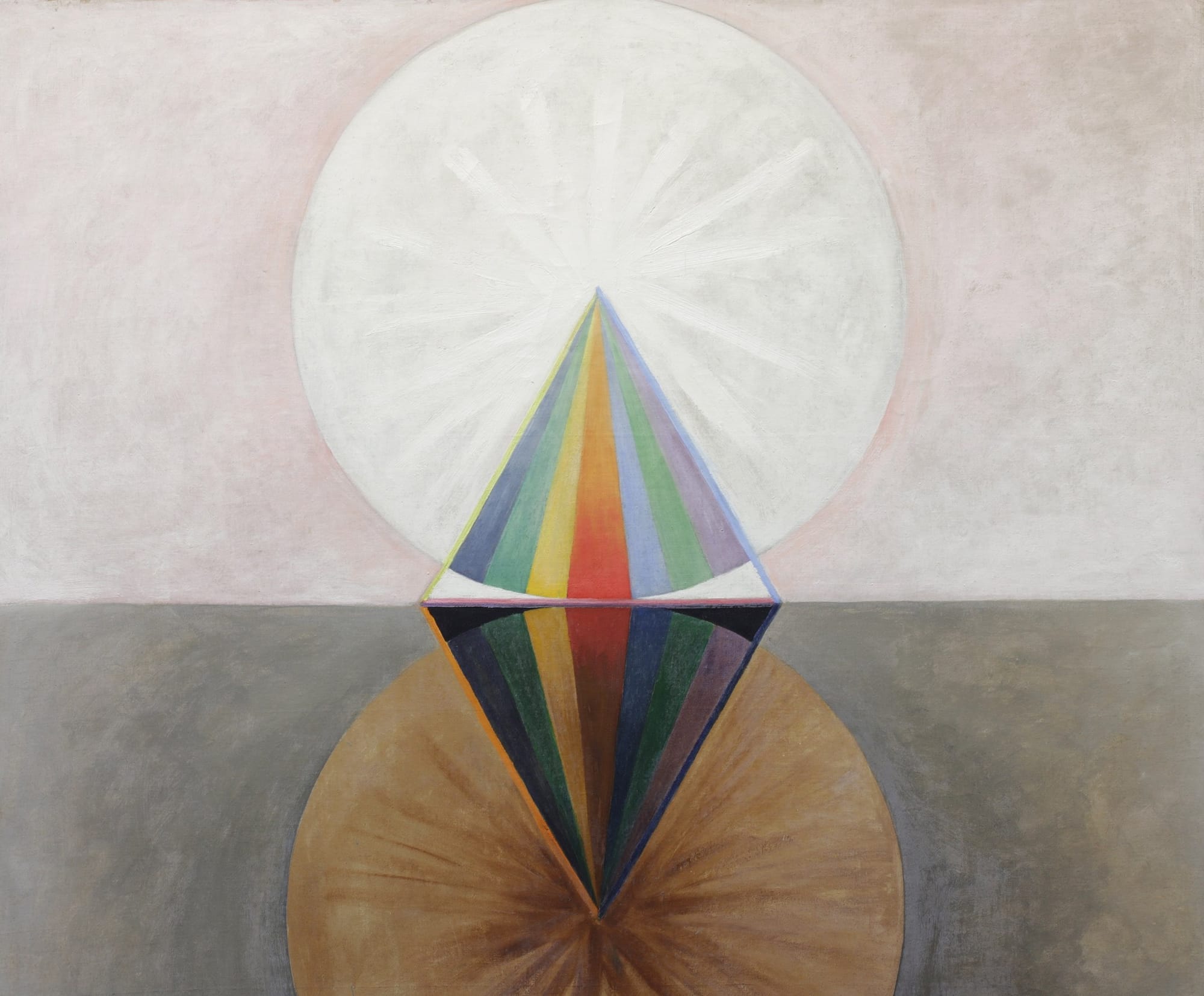
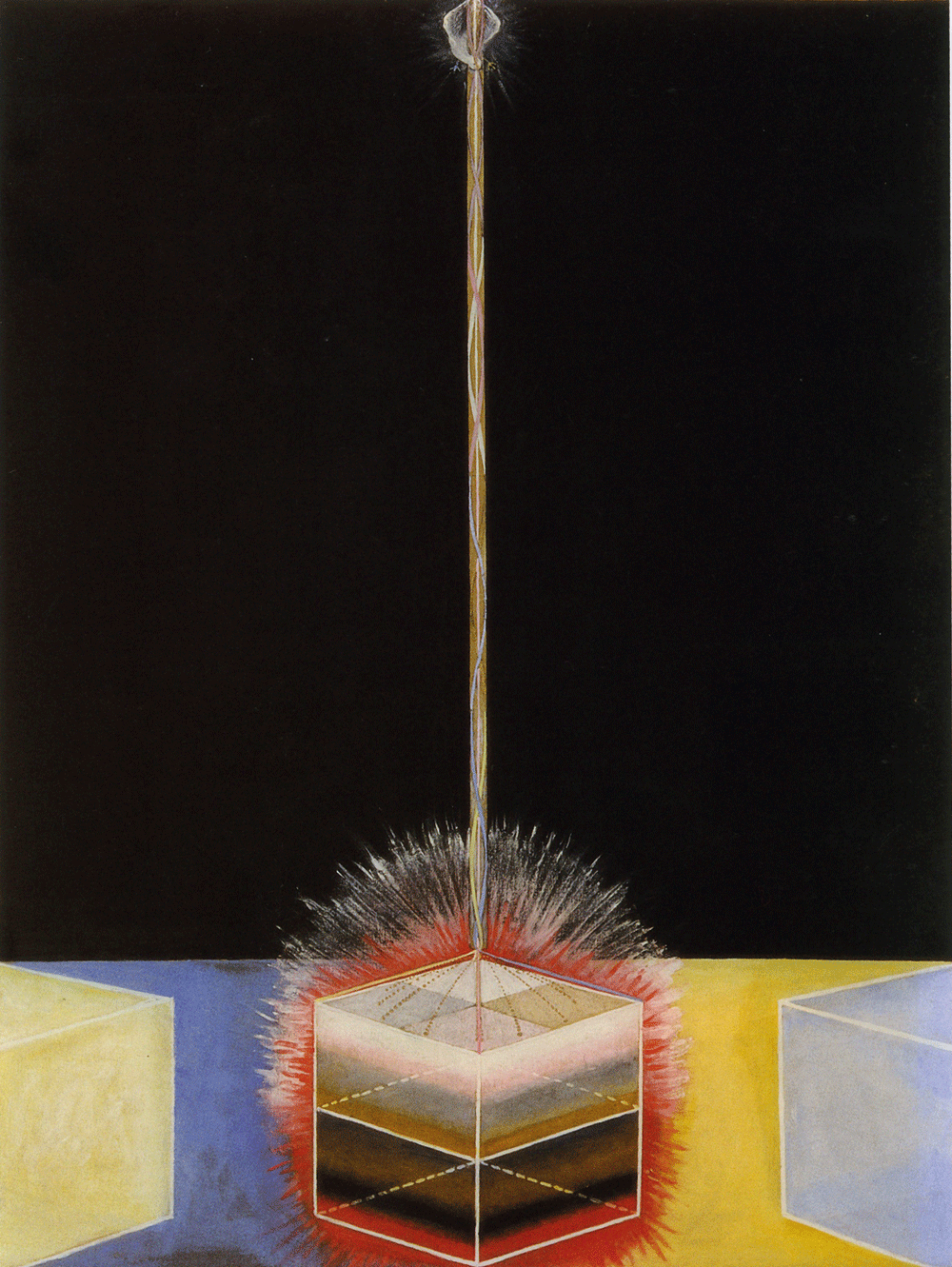
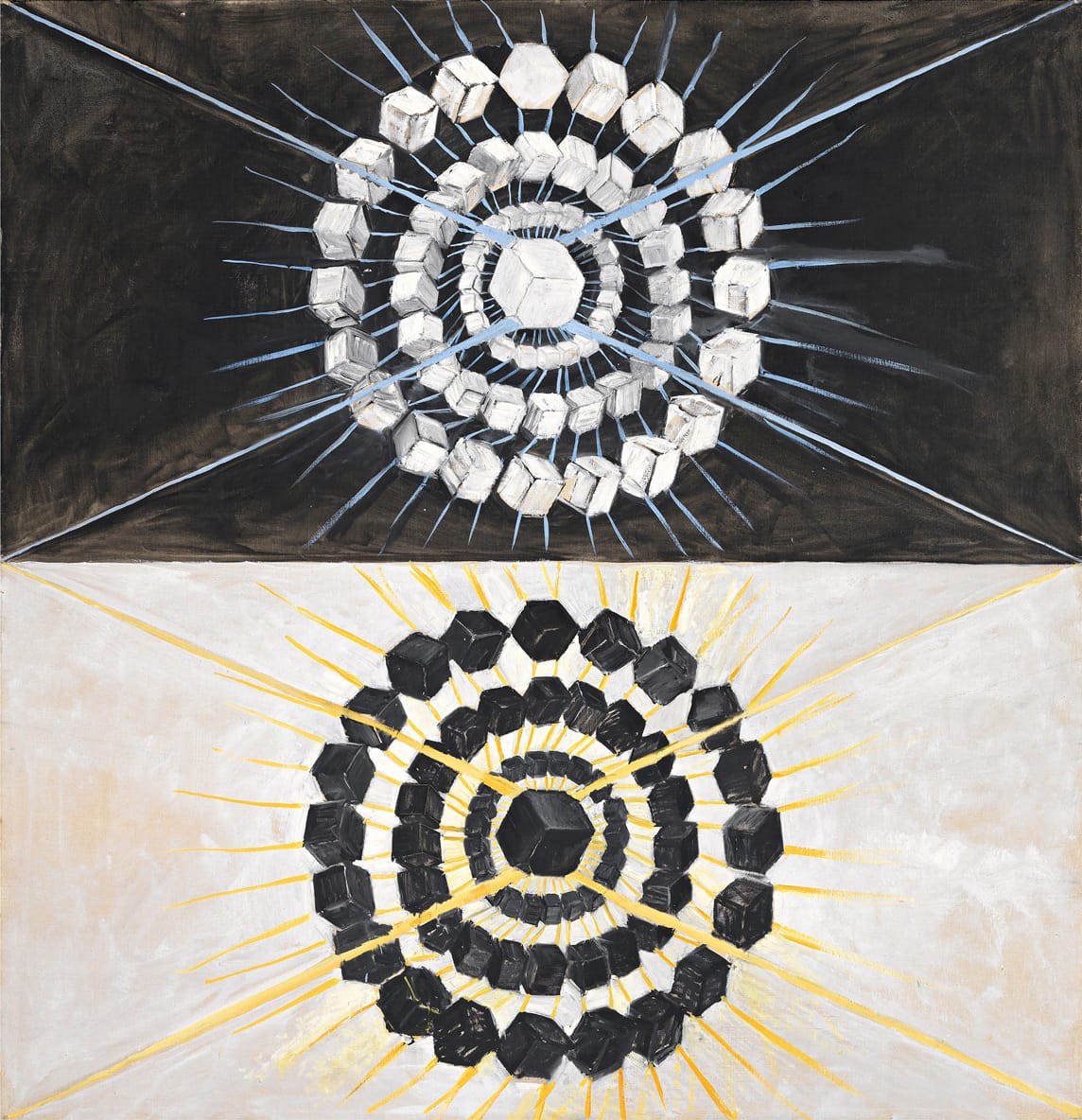
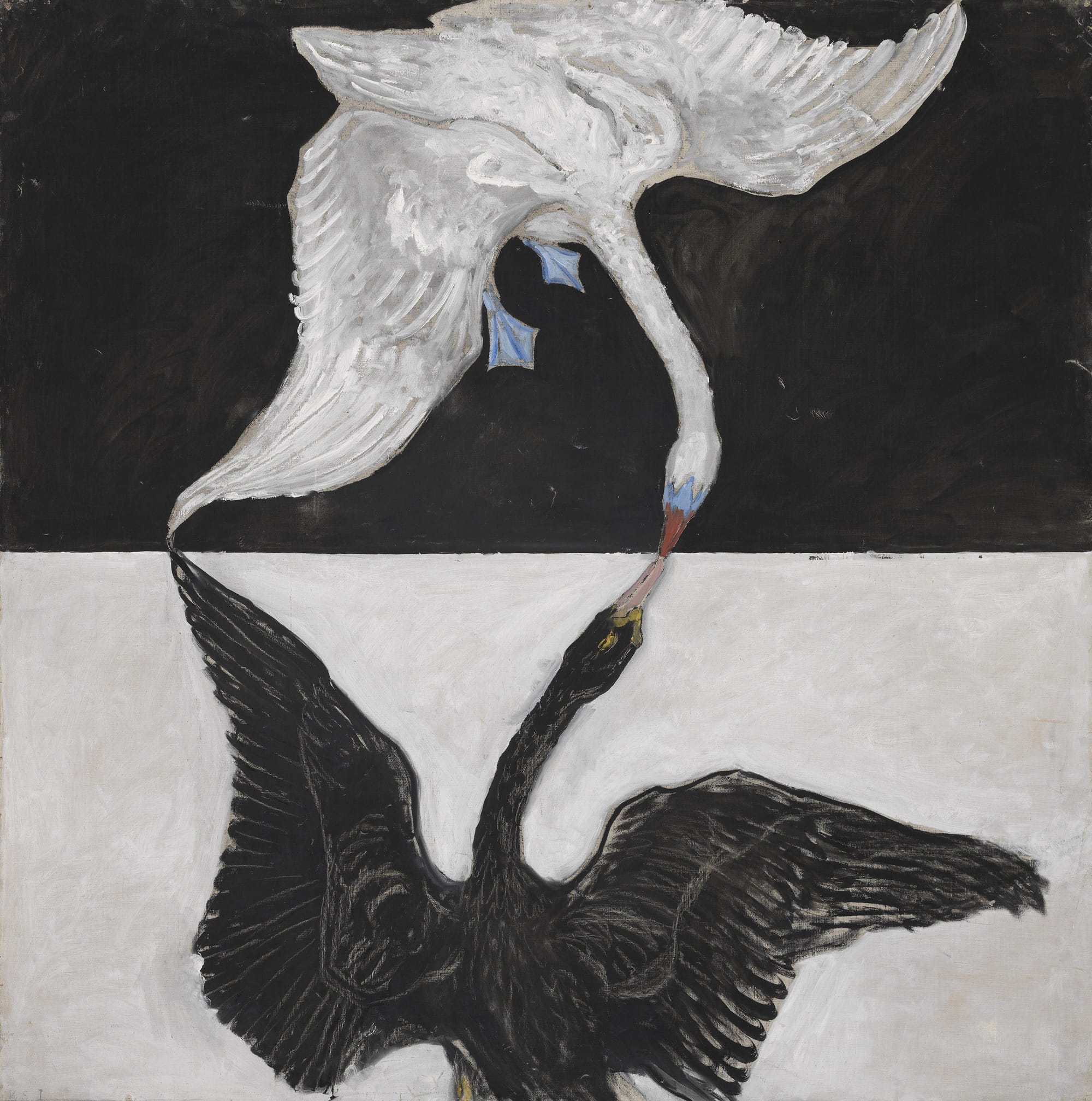
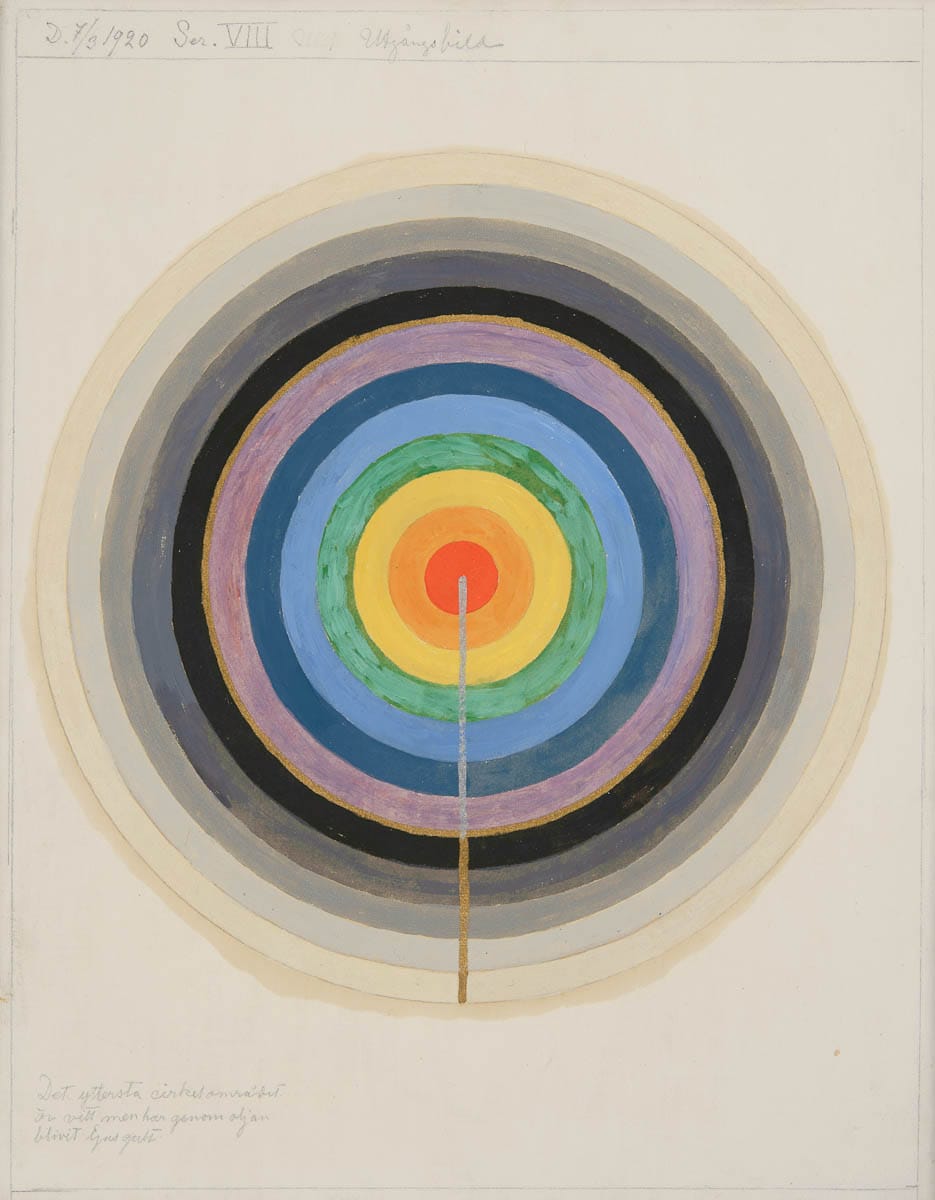
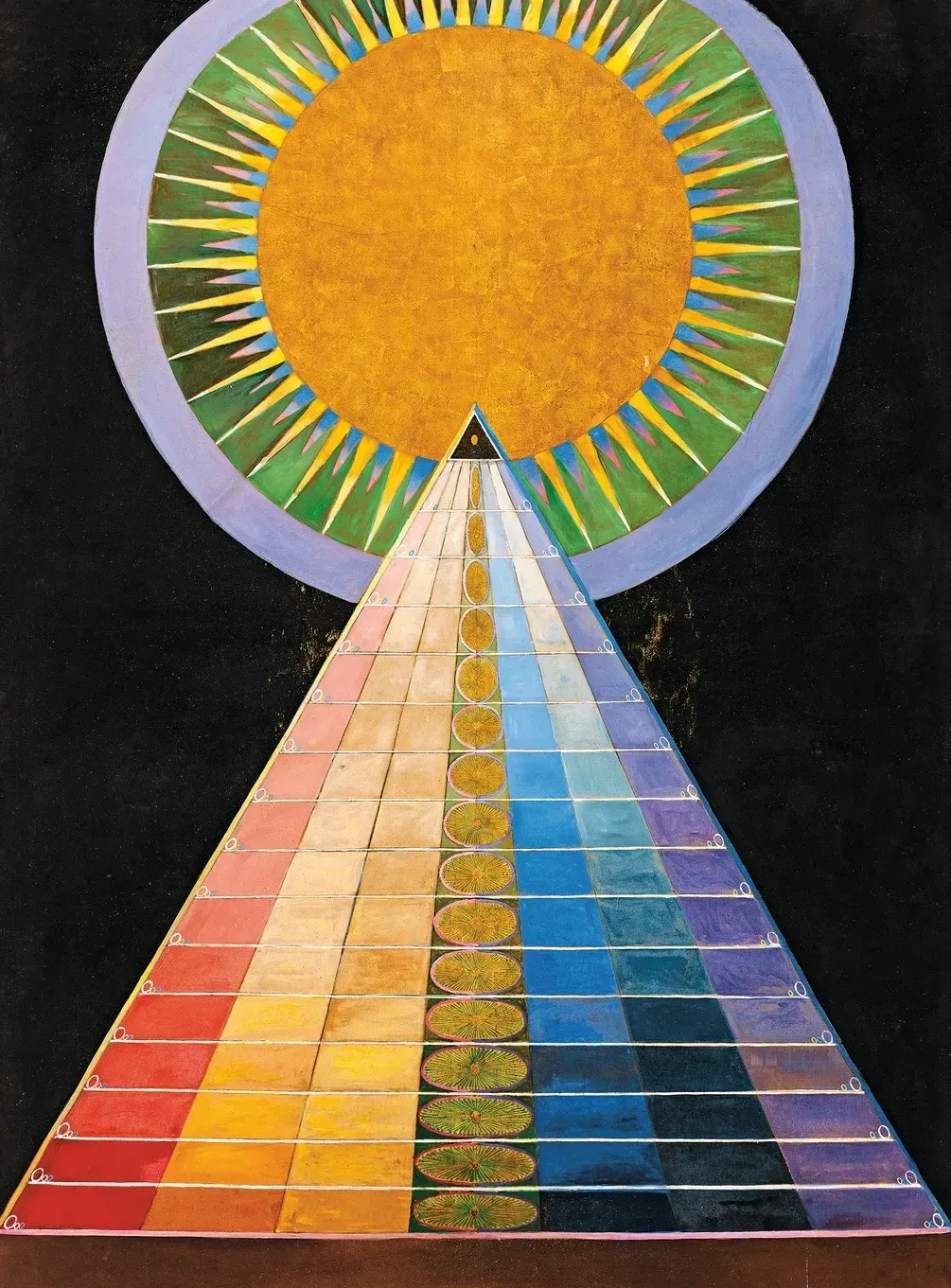
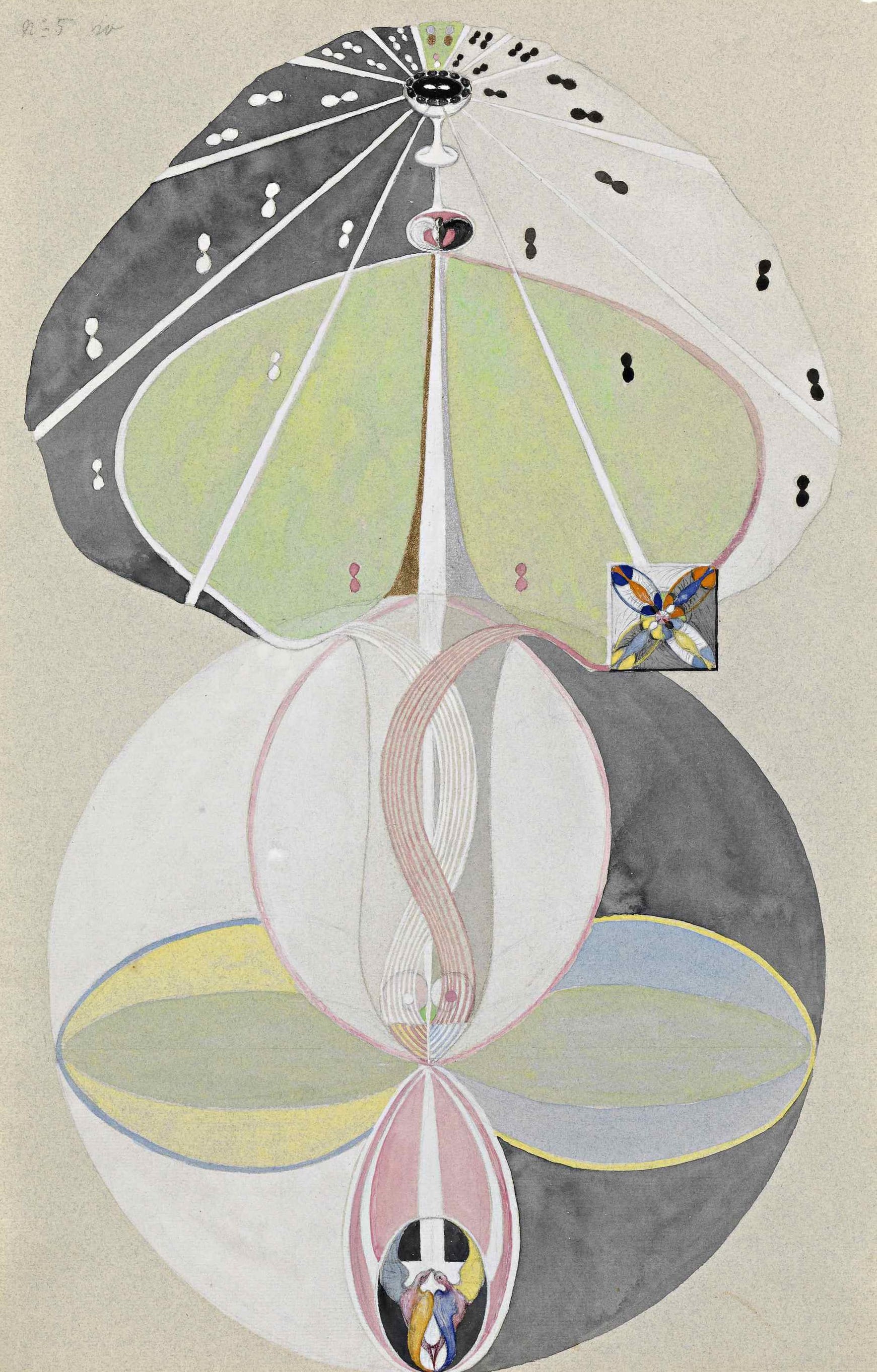
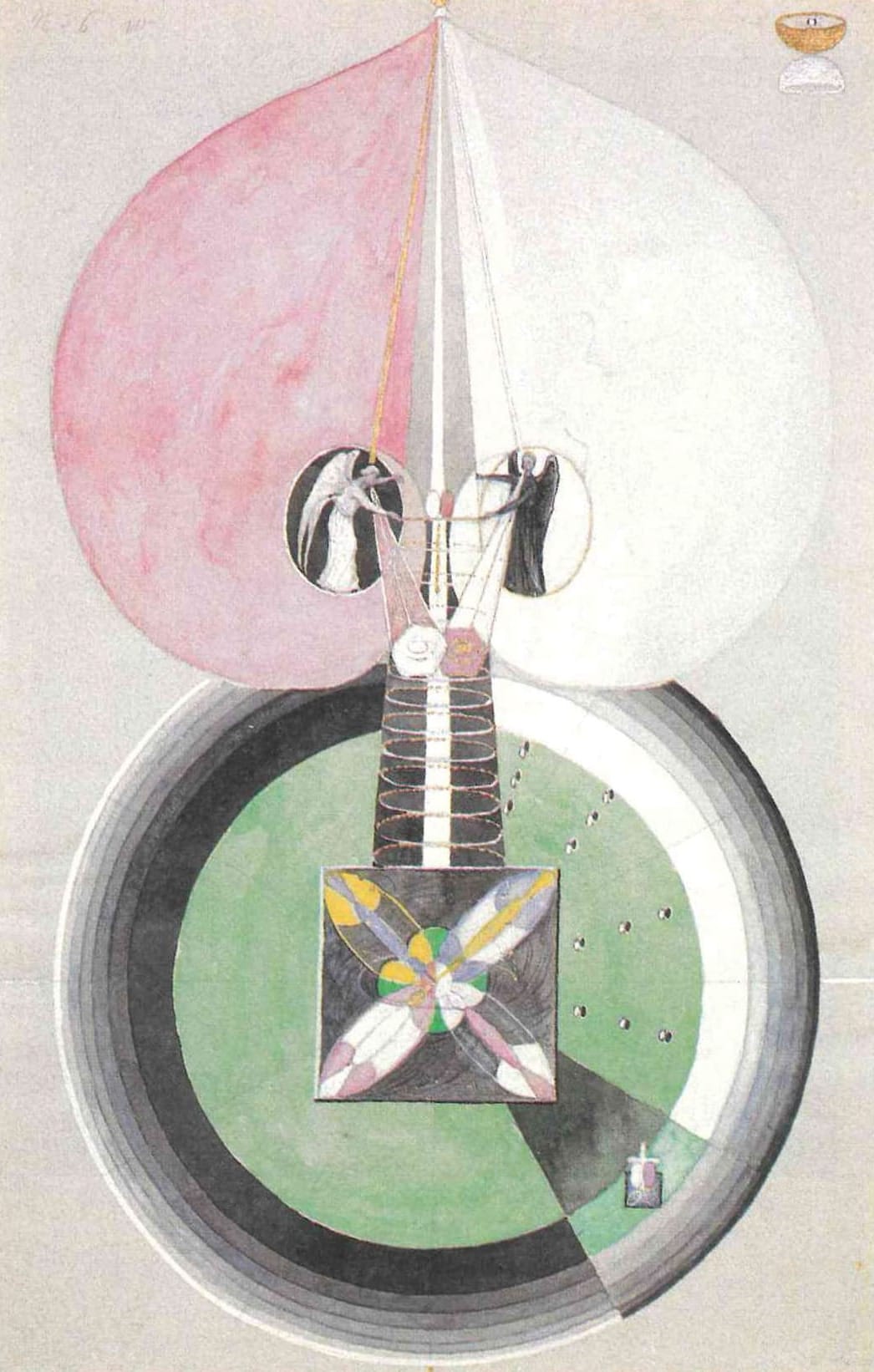
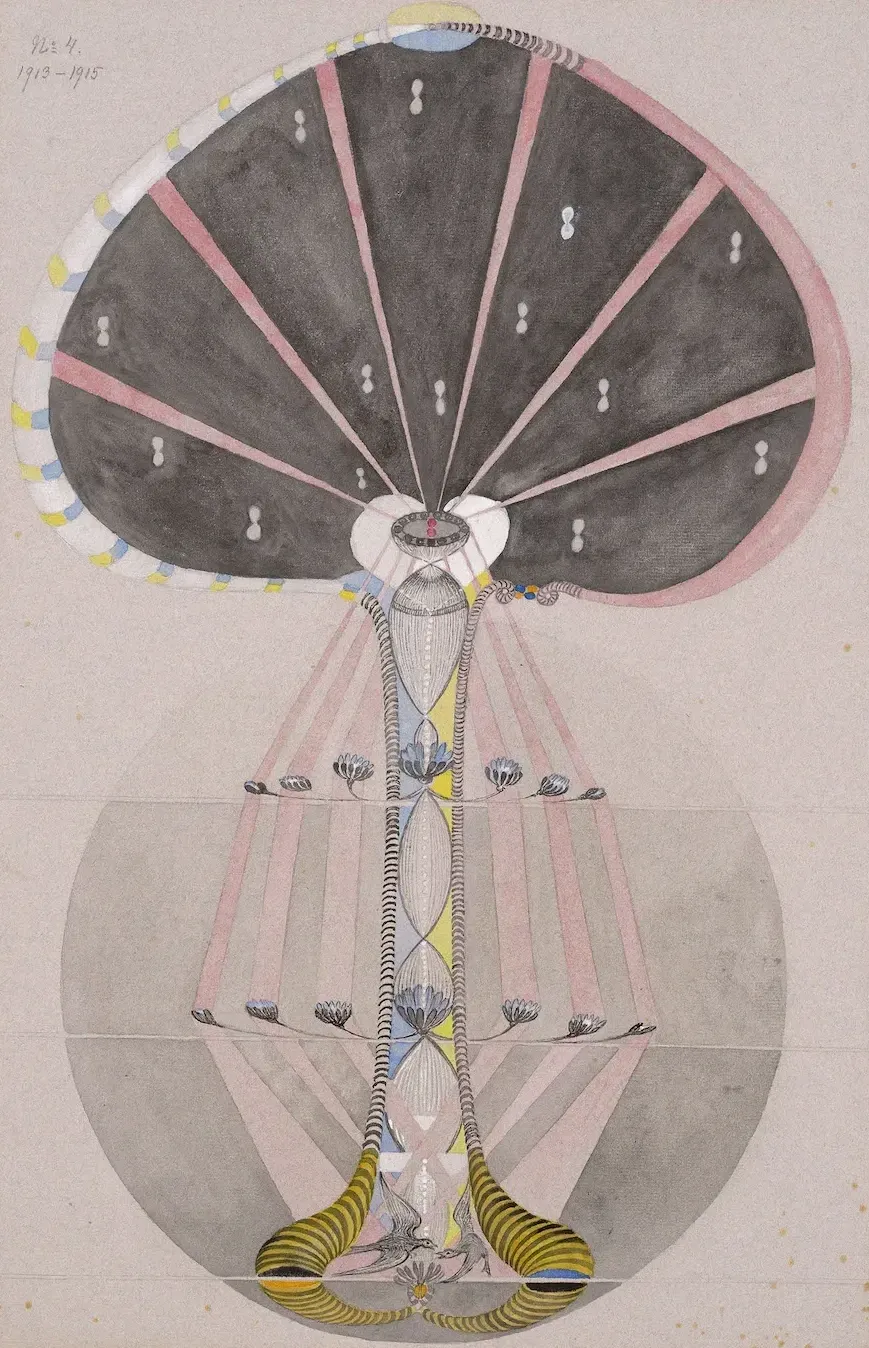
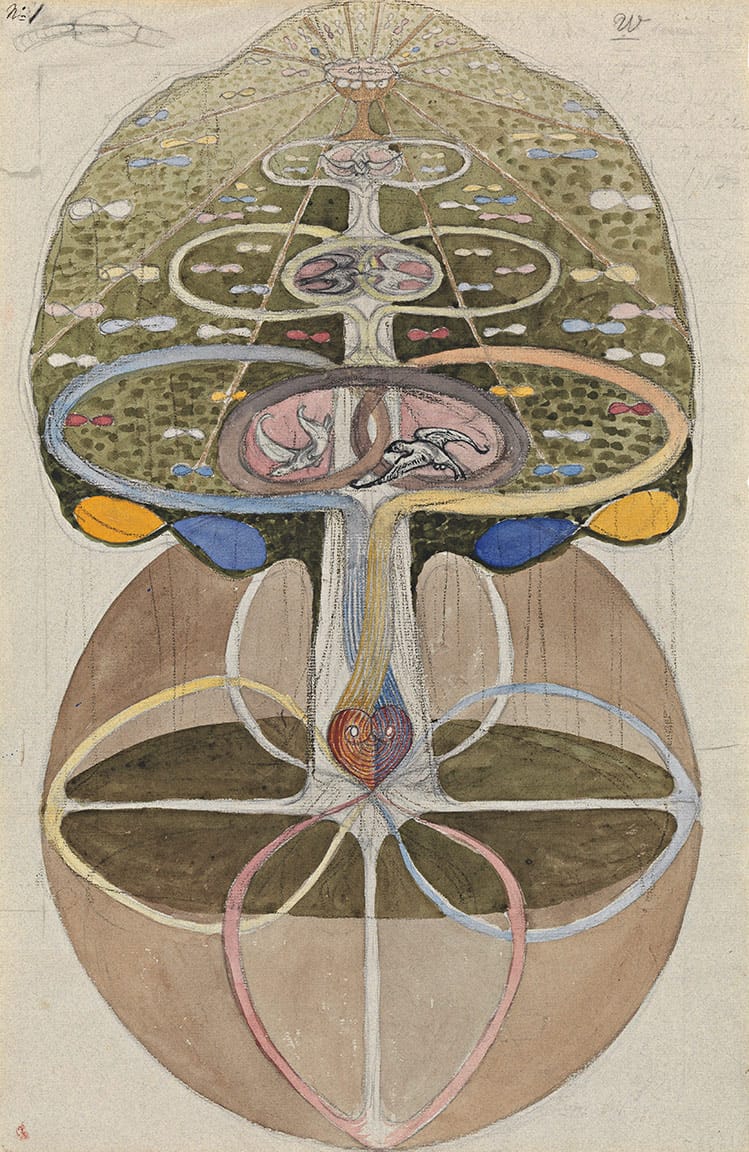
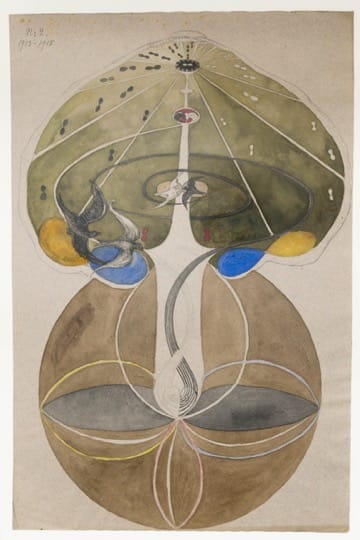
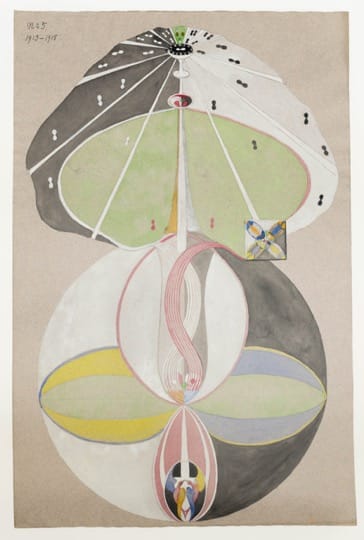

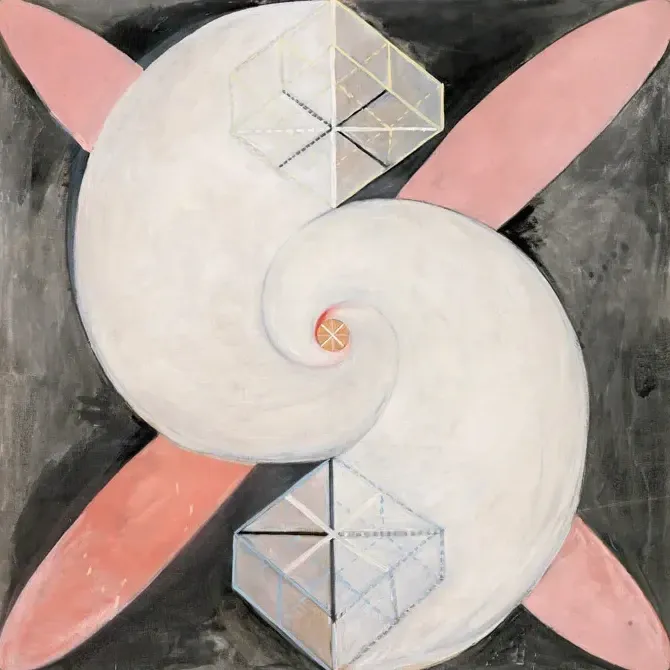
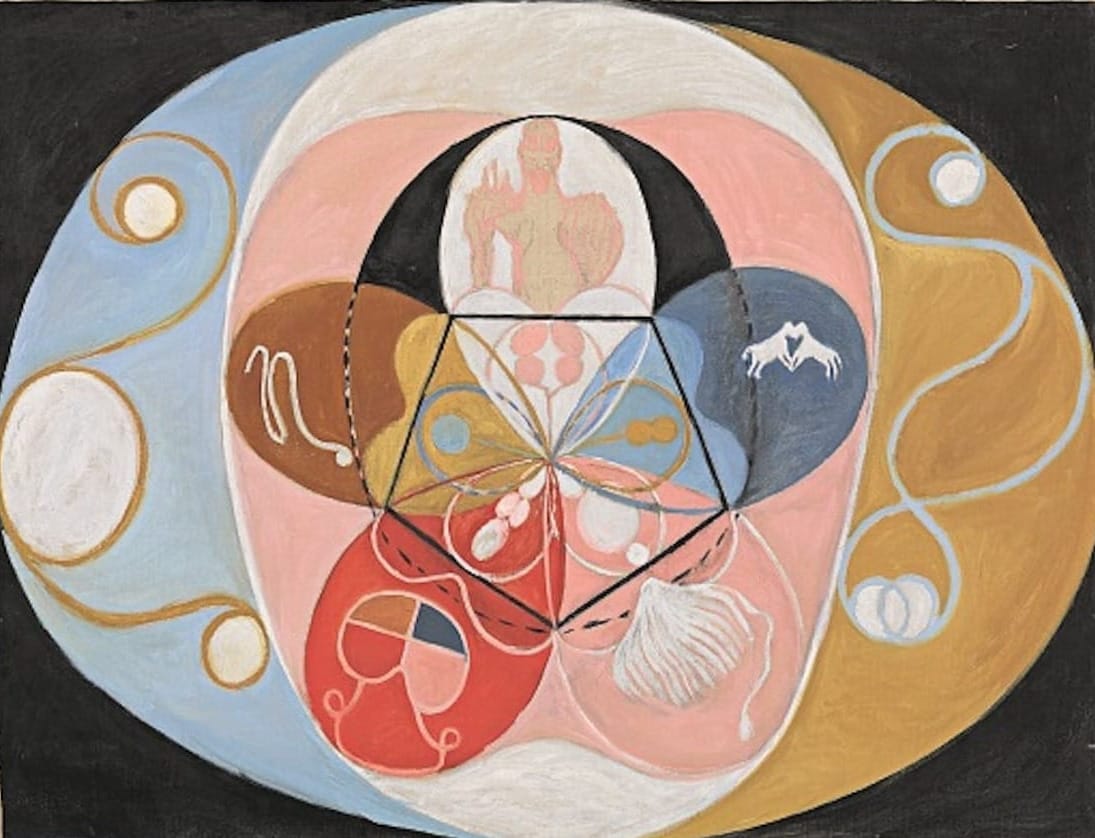

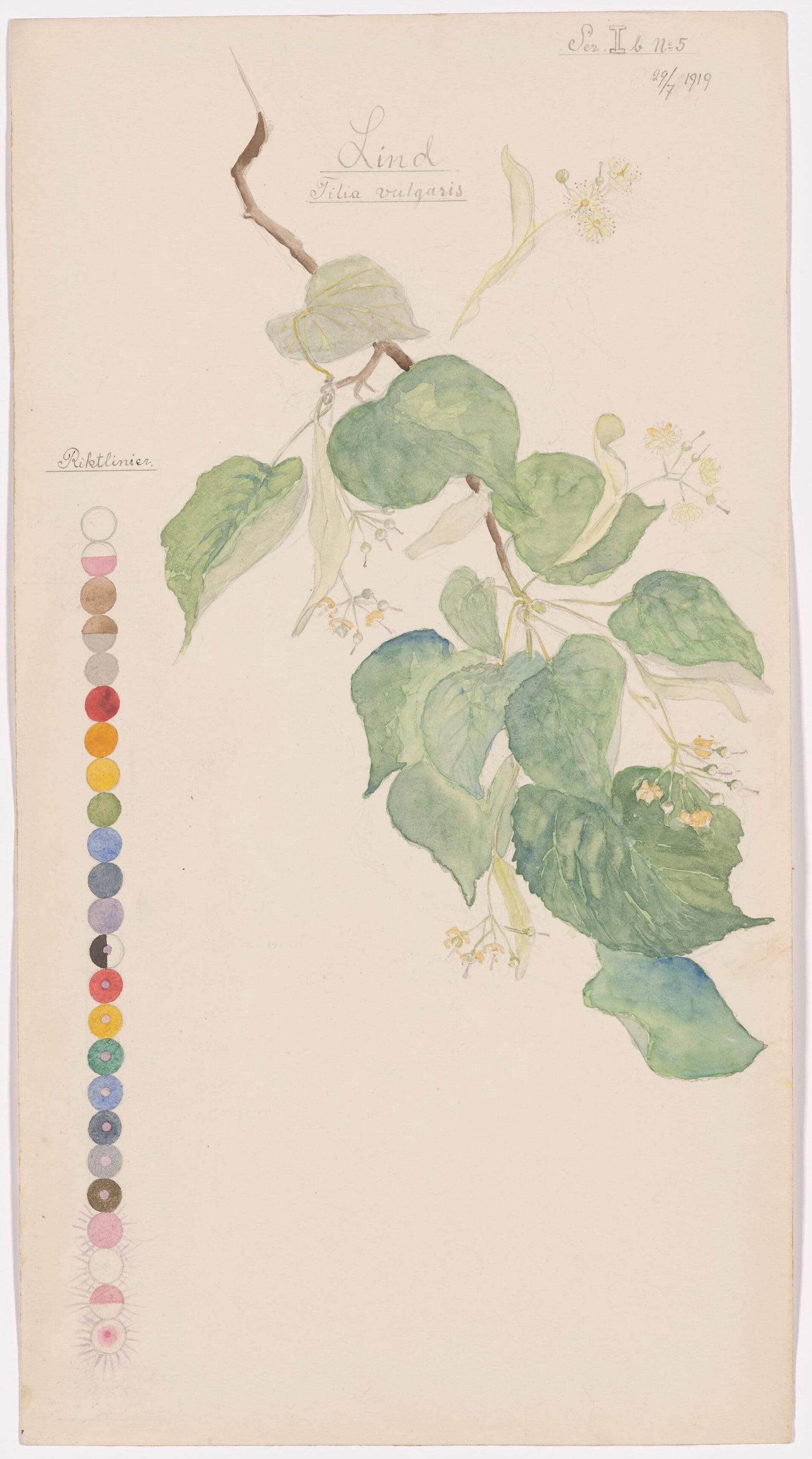
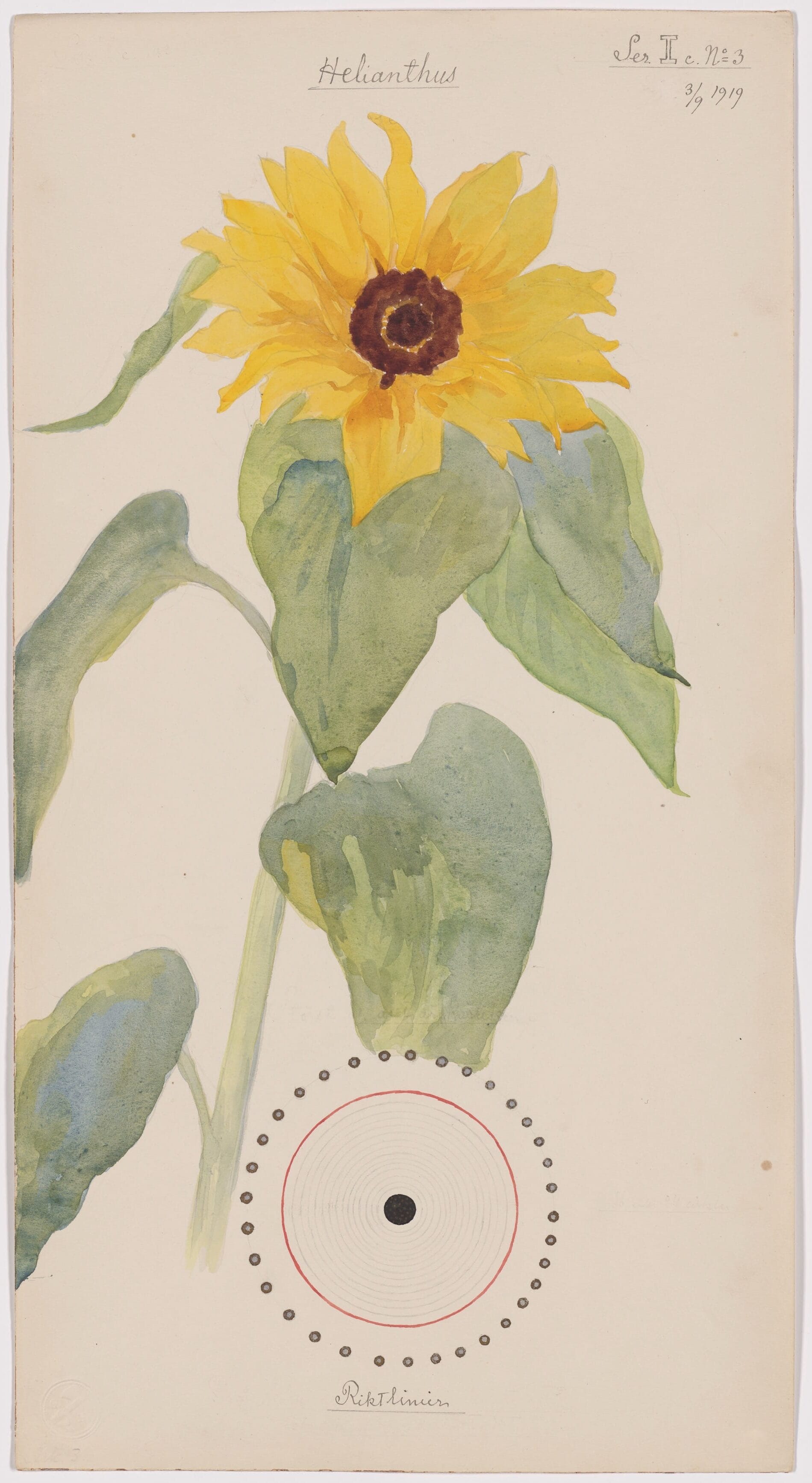
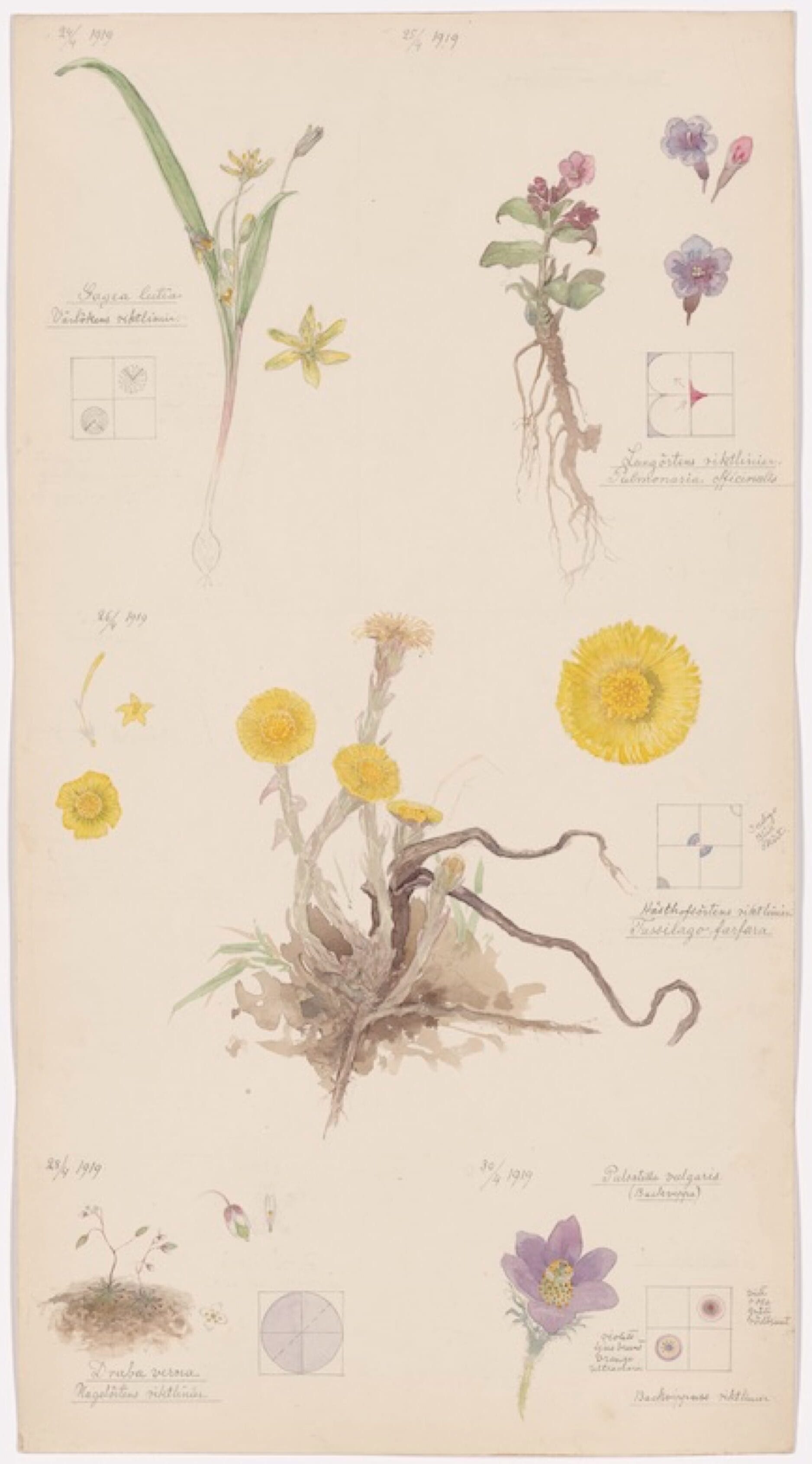
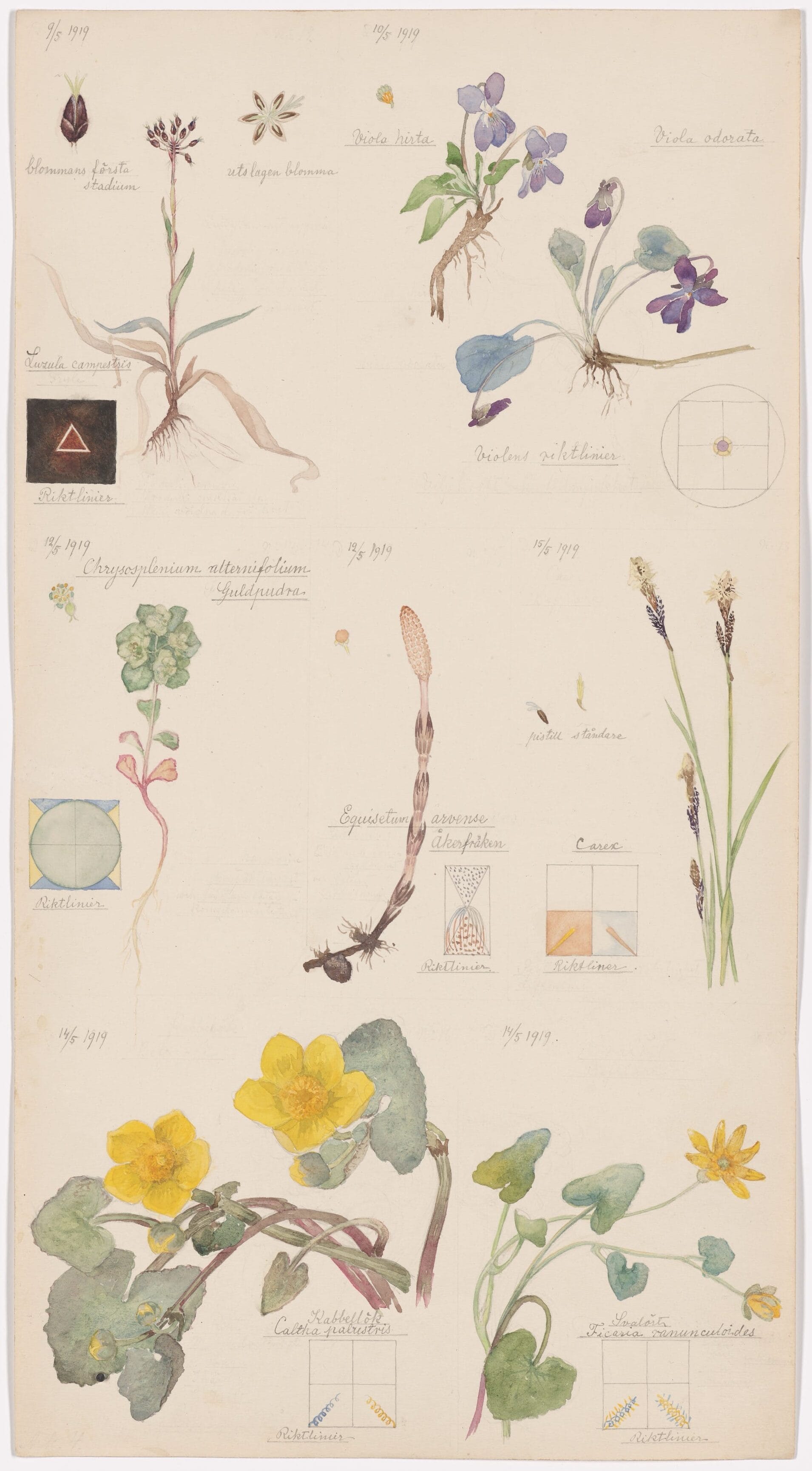
Images from Art History Project, Södertälje konsthall, Smithsonian Magazine, Arcana Books, ArtForum, Colossal, Desert Suprematism, and The Arts Society.


